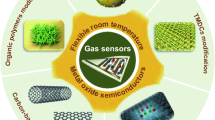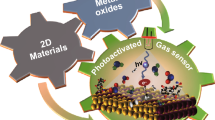Abstract
In this research, the fabrication and testing of three types of thin films are investigated for the study of hydrogen sensors. Individual thin films of pure palladium (Pd) and two alloys of Pd–silver and Pd–yttrium (Y) are fabricated on silicon oxide substrates using a vacuum evaporation technique. In this process, the surface area and the thickness are kept constant for all the fabricated thin films. The electrical resistance and sensing properties of the structures in conjunction with 5 % hydrogen concentration at room temperature are obtained from the resistance–time and sensor response–time characteristics respectively and the results are compared and discussed. The thin film made with Pd–Y alloy shows the best sensor response and reversibility with time to hydrogen. These results show that the Pd–Y thin film can be further improved for application in high performance hydrogen sensors at room temperature. Suggestions are also made as to how to modify and improve the fabricated thin film sensor further.







Similar content being viewed by others
References
T Xu et al. Appl. Phys. Lett. 86 203104 (2005)
G Fortunato, A Bearzotti, C Cliendo and A D Amico Sens. Actuator. 16 43 (1989)
T Azar et al. Sens. Actuator B. 56 158 (1999)
D B Wolfe, J C Love, K E Paul, M L Chabinyc and G M Whitesides Appl. Phys. Lett. 80 2222 (2002)
K Baba, U Miyagawa, K Watanabe and Y Sakamoto J. Mater. Sci. 25 3910 (1990)
R C Hughes and W K Schubert J. Appl. Phys. 71 542 (1992)
Y T Cheng, Y Li, D Lisi and W M Wang Sens. Actuators B. 30 11 (1996)
L Huang, H Gong, D K Peng and G Y Meng Thin Solid Films 34 5217 (1999)
P Kumar and L K Malhotra Mater. Chem. Phys. 88 106 (2004)
S Nakano, S Yamaura, S Uchinashi, H Kimura and A Inoue Sens. Actuators B. 104 75 (2005)
M Wang and Y Feng Sens. Actuators B. 123 101 (2007)
K Gleeson and E Lewis J. Phys. Conf. Ser. 76 012004 (2007)
P Saikia, A Borthakur and P K Saikia Indian J. Phys. 85 551 (2011)
T P Rao, M C S Kumar and V Ganesan Indian J. Phys. 85 1381 (2011)
A T M K Jamal and H Noguchi Indian J. Phys. 85 737 (2011)
Acknowledgments
The authors would like to thank the personnel of the Microelectronic Fabrication Laboratory of the Institute of Technology Tallaght and the Department of Physics Laboratory at Trinity College Dublin for their kind assistance and advice in using the experimental devices. We also acknowledge the financial support through the Strand 1 Program by the Department of Higher Education in Ireland.
Author information
Authors and Affiliations
Corresponding author
Rights and permissions
About this article
Cite this article
Jamshidi, M.M., Alshaltami, K., Akkari, F. et al. Development of palladium-based hydrogen thin film sensor using silicon oxide substrate. Indian J Phys 87, 511–515 (2013). https://doi.org/10.1007/s12648-012-0241-9
Received:
Accepted:
Published:
Issue Date:
DOI: https://doi.org/10.1007/s12648-012-0241-9




